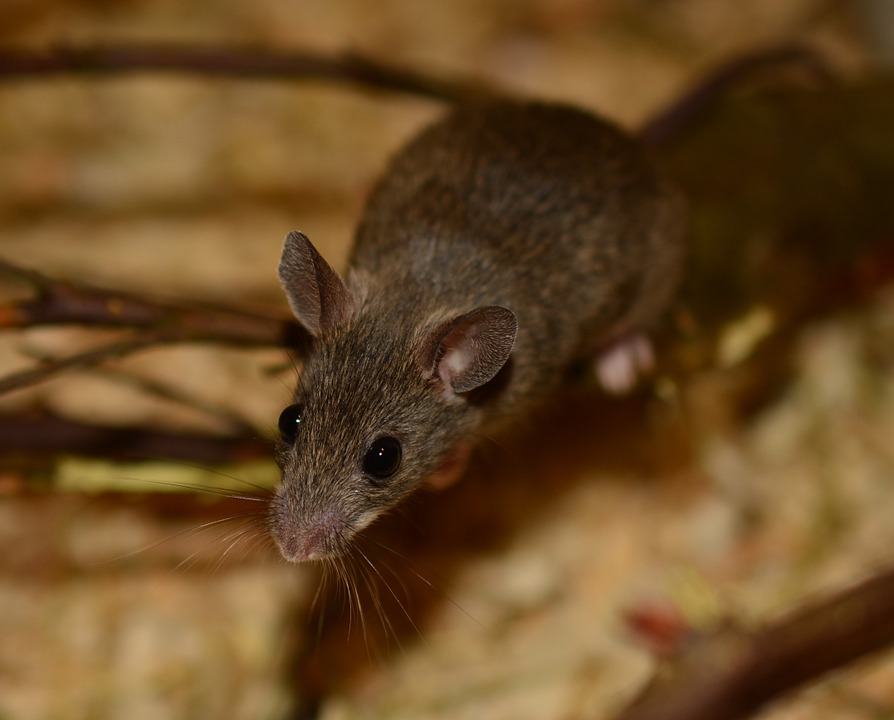One of the reasons why homeowners struggle to resolve rodent problems is the animals’ acrobatic maneuvers. Mice can scurry across the floors, narrow electric cords and interior walls without skipping a beat, but can they climb straight up a wall? Depending on the wall’s composition, mice can climb up virtually any surface. At Skedaddle Humane Wildlife Control, we provide mice control in Pickering using humane methods. We want to share some interesting facts about mice behaviour and how they’re able to move effortlessly through your home.
How Are Mice Able To Climb?
Mice are far from the top of the food chain, and their small, fragile bodies are a welcome treat for lurking attackers. Most predators are faster, larger and more powerful than mice, but the tiny creatures have an advantage. The mouse’s body is ideally designed for moving fast and escaping predators. With help from their tails acting as stabilizers, mice can move quickly and change direction abruptly without losing balance.
The creature’s sharp nails and strong legs allow it to climb up a wall to safety. When traveling vertically, the mouse uses its tail to stay balanced and maintain the correct center of gravity. Walls with textured surfaces made of porous materials make the best climbing walls for rodents. Mice can easily climb concrete, porous stone, wood, stucco and shingles as long as their claws can dig into the surface.
Although a slick surface may deter a mouse from attempting an ascent, the clever animal can find other paths to higher elevation. Most homes have electrical cords dangling from televisions and stereos parallel to the walls. Mice can grip the cords and climb their way up, and they can hop over to higher ledges.
The hopping ability of rodents is exaggerated in the movies, but it’s still impressive. Most common house mice can hop up to 13 inches, and a rarer form of jumping mice can leap 13 feet. Luckily, most North American residents do not have to worry about jumping mice vaulting across their kitchens. Jumping mice are not as curious and bold as the field mice that often make homes in residential areas, and they’re less likely to appear during the day.
Which Surfaces Are Difficult for Mice To Climb?
The climbing abilities of rodents are spectacular, but they cannot scale every wall. Glass walls are too slick and lack the texture needed for tiny claws. Metal, ceramic and finished wood are also difficult for mice to climb, but they do not stop looking for alternate routes to their destinations. If they find a rope or electrical cable hanging next to a smooth wall, they can scale it without problems.
How to Prevent an Infestation
With their incredible agility, mice are challenging to capture and remove. Some homeowners believe their rodent problem isn’t severe when they only see one mouse, and they conclude that they can solve the issue with commercial pest control products.
However, seeing one mouse is not an indication of the actual population numbers. Mice are nocturnal and mainly feed at night, but some are curious enough to wander around in the daytime. Mice typically do not travel in groups, and the one mouse you spotted may be part of a larger group of dozens living in your walls.
Keeping your home clean and free of debris can minimize your chances of an infestation. Removing limbs that reach from the trees to the roof can cut off one possible route to your home, but be sure to inspect your exterior and interior walls for small openings. Mice have flexible spines, and they’re capable of squeezing into tiny spaces no larger than the diameter of a pencil.
Capturing rodents is a hazardous activity suited for professional technicians. Before spending your money on ineffective traps and poisons, call the experts at Skedaddle Humane Wildlife Control. We can solve your rodent problem humanely and prevent future infestations. Contact us today.




